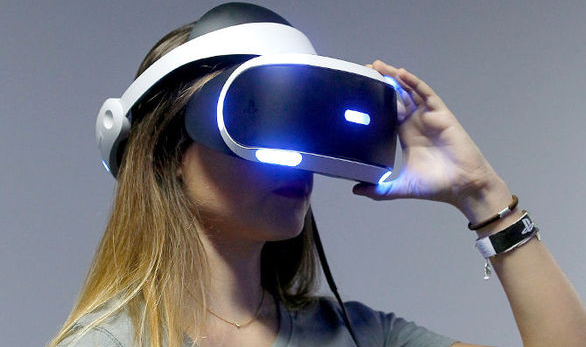VR Headset

|
VR
|
VR headsets Supported Formats |
| Carl Zeiss VR One | Like Samsung’s Galaxy Gear, the Carl Zeiss VR One uses a mobile phone as its display. However, unlike the Galaxy Gear, it supports both the iPhone 6 and the Galaxy S5, although you need to specify which one when you buy. |
| Oculus Rift | As a teenager, Luckey collected VR tech and was fascinated with making his own headset in his garage. Numerous prototypes and a $2bn Facebook buyout later, Oculus is still the biggest name in VR, thanks to a partnership with Samsung and its own upcoming headset. |
| HTC Vive | Offers the best virtual reality we’ve ever experienced. This is thanks to the headset’s two 1080 x 1200 screens, the highest resolution displays out there, and the two sensors that hang on your wall to track movement. |
| Sony Morpheus | Probably has the best chance of becoming a commercial success. First of all, while most VR headsets require a decent PC or the latest mobile phone, Sony’s Morpheus just needs a PlayStation 4. Secondly, Sony has some of the best game studios in the world working on games for Morpheus: its London and Tokyo studios have produced some excellent VR demos, and Uncharted developer Naughty Dog could be next. |
| Microsoft HoloLens | Instead of immersing the player in an entirely computer-generated world, HoloLens augments reality, adding interactive holograms to the space you already inhabit. Microsoft showed demos of people building Minecraft structures on top of their tables, exploring objects such as a motorbikes, or being able to create video feeds on any surface you like. |
| Razer OSVR | OSVR stands for Open Source Virtual Reality, so everything about the platform is open and freely available. You can even download the 3D files and create your own headset, if you like. |
| FOVE Eye Tracking VR | FOVE believes that the future of VR control is eye-tracking, and its headset uses tiny cameras to track where you’re looking in real-time. |
| Archos VR Glasses | Archos has been undercutting manufacturers of mobile phones, tablets and portable games consoles for years, so it was only a matter of time before they got into the VR market. |
| Google Cardboard | A somewhat tongue-in-cheek take on VR, but it makes a great weekend project if you want to see what the fuss is about. You can either download the instructions and make your own headset, or you can buy a kit from a variety of vendors. |
| Avegant Glyph | The Glyph is compatible with anything that supports external displays, so you can use it with your home consoles or practically any modern mobile phone. You simply slip the band over your eyes, cover your ears with the headphones, and watch or play your content on the retina-quality display. |
| Samsung Gear VR | Powered by technology from Oculus, the Samsung Gear VR was effectively the first VR headset on the market. To use it, you simply grab a Samsung phone, download apps and games from the Oculus store, and clip it into the headset. The original model supported the Note 4, but a new model out this spring is compatible with the Galaxy Note 7 and Galaxy S7/6 Edge. |
Have more questions about Pavtube, please feel free to contact us >> or leave a message at Facebook.


Leave a Reply
You must be logged in to post a comment.